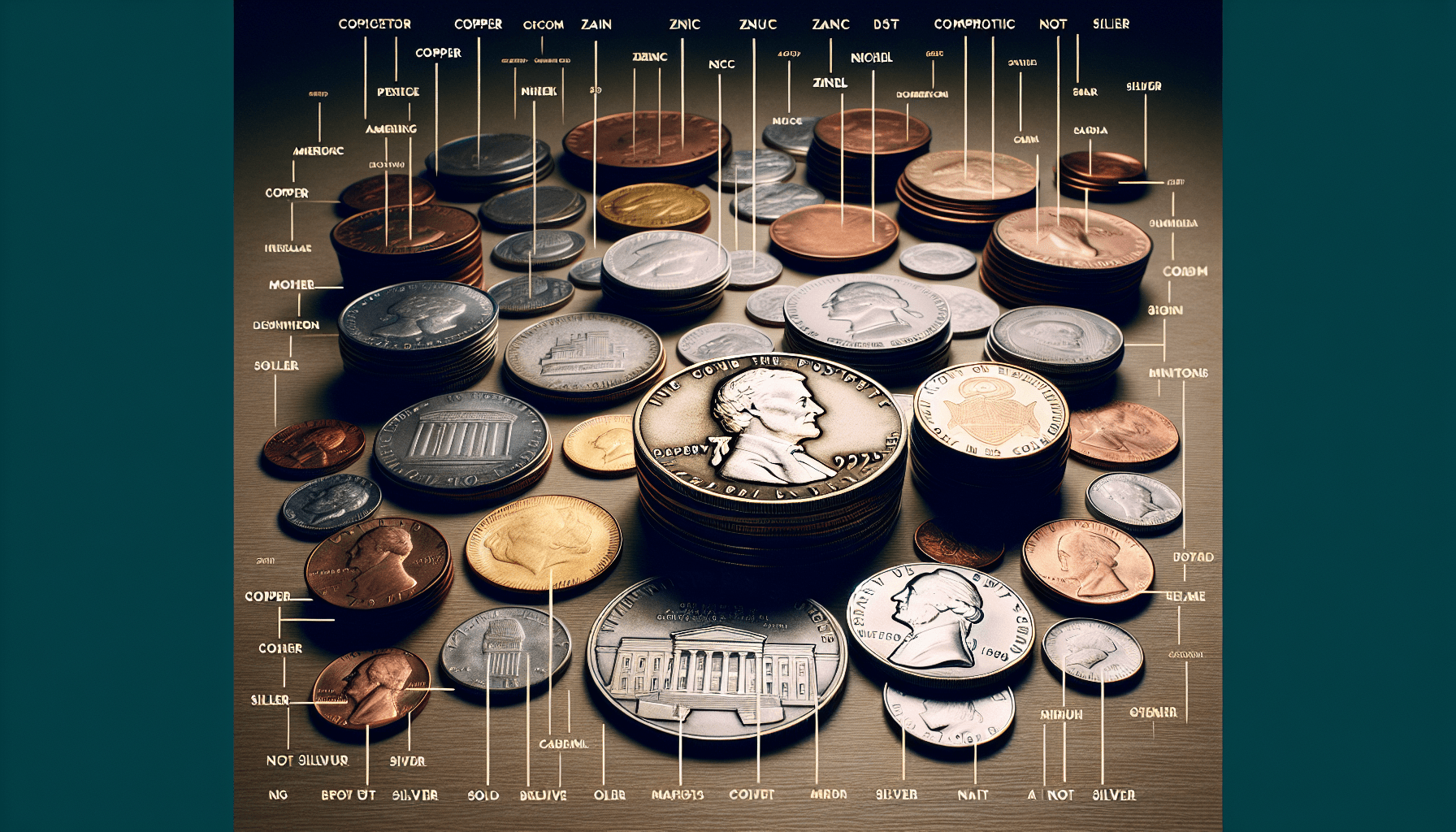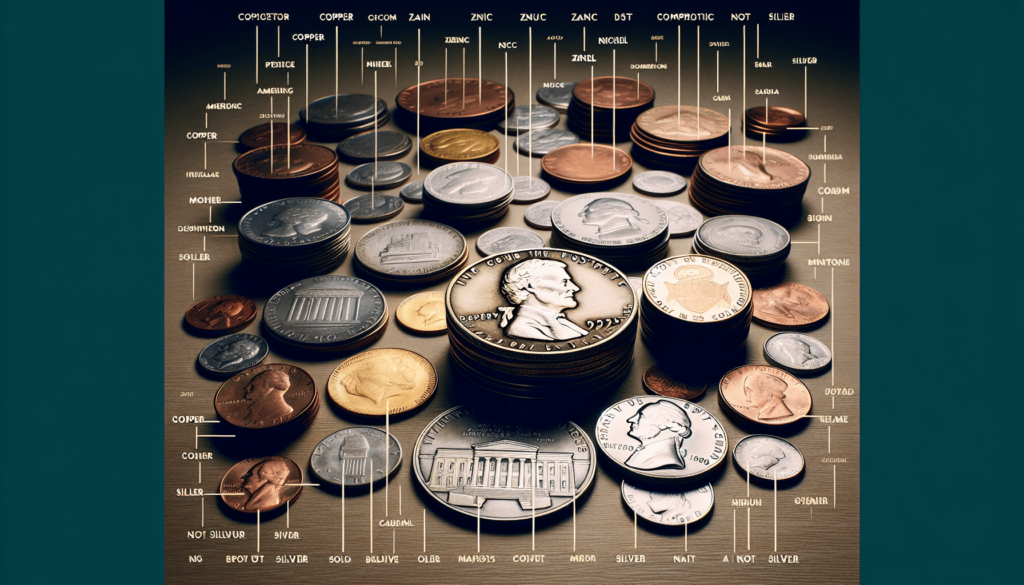So, have you ever wondered if those American coins jingling around in your pocket are actually made of silver? Good news for you, my friend. I’ve got the lowdown on this shiny topic. Let’s say you stumble upon a mysterious coin from, say, the 1960s. You might find yourself asking, “Hey, is this thing made of silver?” And I’m here to tell you, it’s quite possible! But, before you start seeing dollar signs, let’s dive into the fascinating world of American coinage and find out exactly what year those precious silver coins were minted.
Introduction
Hey there! Have you ever wondered about the shiny silver coins that you find in your pocket? They’re not just ordinary coins – they have a rich history and hold a certain allure that makes them fascinating. In this article, we’ll dive into the world of silver coins in the US, exploring their history, composition, how to identify them, and even the myths that surround them. So grab a cup of coffee and join me as we embark on this silver coin adventure!
History of Silver Coins in the US
The early years of American coinage
Let’s turn back the clock and take a peek at the early years of American coinage. Did you know that the first official US coins were minted in the late 18th century? These coins, known as the “Flowing Hair” coins, were made of silver and had a beautiful design. Imagine holding one of those pieces of history in your hand!
The introduction of silver coins
As the United States grew, so did the need for a reliable monetary system. The introduction of silver coins marked a significant milestone in American history. In the 1790s, the US Mint began producing silver coins, such as the silver dollar and half-dollar. These coins played a crucial role in facilitating trade and commerce, making transactions much more convenient for everyone.
The role of silver in the US monetary system
Silver played a vital role in the US monetary system for many years. It was used in various denominations, ranging from dimes to dollars. In fact, the Coinage Act of 1792 established a bimetallic standard, where both gold and silver were recognized as legal tender. This standard remained in place until the early 20th century when silver began to take a backseat to other metals.
Composition of American Coins
Different metals used in American coins
Now, let’s talk about what American coins are made of. While silver was the go-to metal for coins in the early days, changes occurred over time. Other metals started making their appearance in American coins, such as copper and nickel. The composition varied depending on the denomination and the time period in question.
The shift from silver to other metals
As the value of silver fluctuated, the United States Mint began to reduce the silver content in coins to stretch resources and maintain stability. The shift from silver to other metals became more pronounced in the mid-1960s, with the removal of silver from dimes and quarters. These coins, known as “clad” coins, are made up of layers of copper-nickel alloys and do not contain any silver.
The current composition of American coins
Today, most American coins are predominantly made of copper and nickel, with the exception of the American Silver Eagle, a bullion coin made of one ounce of pure silver. The familiar penny, nickel, dime, and quarter that we use in our daily lives do not contain any silver. So, sadly, the silver content in American coins is a thing of the past. But don’t worry, there’s still plenty of excitement left when it comes to collecting and understanding silver coins!
Identifying Silver Coins
Characteristics of silver coins
Are you curious about how to identify those elusive silver coins? Well, silver coins have a distinct appearance that sets them apart from other coins. They often have a bright, shiny appearance and can develop a beautiful patina over time. Additionally, silver coins tend to be more substantial than their non-silver counterparts, giving them a satisfying weight when you hold them.
Common silver coins in circulation
While silver coins are no longer in circulation in the United States, there are still plenty of them floating around out there. Some common silver coins in circulation include the Morgan silver dollar, the Peace dollar, and the Walking Liberty half-dollar. These coins are often highly sought after by collectors due to their historical significance and silver content.
Dealing with counterfeit silver coins
Now, we must address the elephant in the room – counterfeit silver coins. Unfortunately, there are individuals out there who try to pass off fake silver coins as the real deal. To avoid falling into this trap, it’s important to educate yourself on what genuine silver coins look like. Look out for inconsistencies in weight, shape, and metallic color. If something seems off, it’s best to consult a coin expert or trusted dealer to ensure that you are getting the real McCoy!
Collecting Silver Coins
The appeal of collecting silver coins
There’s something undeniably captivating about collecting silver coins. It’s like holding a piece of history in your hand, knowing that generations before you also held the same coin. The thrill of the hunt, finding rare silver coins, and creating a collection that tells a story are all part of the appeal. Plus, silver coins can be a great investment, as their value can increase over time.
Tips for starting a silver coin collection
If you’re eager to start your own silver coin collection, here are a few tips to get you started. First, do your research and educate yourself about different types of silver coins, their history, and their value. It’s also important to set a budget and decide what kind of coins you want to focus on, whether it’s a specific era, design, or country. Finally, be patient and persistent. Building a collection takes time and effort, but it can be a rewarding journey.
Preserving and storing silver coins
Once you’ve started your collection, it’s essential to take good care of your silver coins. Silver can tarnish over time, so it’s crucial to store them in a dry and non-reactive environment. Consider using protective sleeves or coin holders to prevent scratches and damage. And if you really want your silver coins to shine, give them a gentle polish every now and then using a non-abrasive cloth and a silver polish specifically designed for numismatic coins.
Value of Silver Coins
Factors that affect the value of silver coins
When it comes to determining the value of silver coins, several factors come into play. The silver content in a coin is one obvious factor. The condition, rarity, and historical significance of the coin also play a significant role in determining its value. Additionally, market demand and trends can greatly influence the price of silver coins.
Determining the worth of silver coins
If you stumble upon a silver coin and are curious about its worth, you might find yourself asking, “How do I determine its value?” Well, there are resources available, such as coin value guides and online databases, that can give you a general idea. However, for a more accurate assessment, it’s advisable to consult with a professional coin appraiser or dealer who can take into account all the relevant factors and provide you with an informed evaluation.
Selling or trading silver coins
If you find yourself ready to part ways with some of your silver coins or if you stumble upon a valuable find, you may be wondering how to go about selling or trading them. Online marketplaces, coin shows, and reputable dealers are all options to consider. It’s important to do your due diligence and research the potential buyers or sellers to ensure you get a fair deal. And who knows, you might even find a fellow silver coin enthusiast who would be interested in a trade!
Rare and Valuable Coins
Notable rare and valuable silver coins
Ah, rare and valuable silver coins – the holy grail of coin collecting! Some notable examples include the 1804 Silver Dollar, the 1913 Liberty Head Nickel, and the 1894-S Barber Dime. These coins are not only coveted for their scarcity but also for their unique stories and historical significance. If you ever stumble upon one of these gems, consider yourself lucky!
The allure of rare coin collecting
What is it about rare coins that has collectors enchanted? Well, the thrill of the hunt and the challenge of finding something truly special play a significant part. Rare coins often have captivating histories and unique characteristics that set them apart from the rest. As an added bonus, they can also have substantial investment potential. So, keep your eyes peeled – you never know what hidden treasure you might come across!
How to identify rare silver coins
Identifying rare silver coins requires a keen eye and a bit of knowledge. Keep an eye out for key dates, mint marks, or any unique variations that might indicate rarity. Research different coin series and their mintage numbers to get an idea of which coins are scarce. And remember, when in doubt, don’t hesitate to consult with experts or other seasoned collectors who can share their knowledge and help you identify those hidden gems.
Misconceptions about American Coins
Common myths about silver coins
There are quite a few myths and misconceptions surrounding silver coins, and it’s time we debunk them! One common myth is that all American coins used to be made of silver. As we discussed earlier, while silver was prevalent in the early years, its usage gradually decreased over time. Another misconception is that all silver coins are highly valuable. While some silver coins can be quite valuable, many others have a more modest worth. It’s important to remember that not every silver coin is a hidden treasure.
Demystifying the misconceptions
Let’s set the record straight: not all American coins are made of silver, and not all silver coins are worth a fortune. The composition of American coins has changed significantly over the years, with silver being phased out in favor of other metals. Additionally, the value of a silver coin depends on various factors, such as rarity, condition, and market demand. So, don’t let these misconceptions deter you from enjoying the fascinating world of silver coins!
Separating fact from fiction
Now that we’ve cleared up some common misconceptions, you might be wondering, “Where can I find accurate information about American coins?” Well, there are several reputable resources available. Books, online forums, and websites dedicated to coin collecting provide valuable information and insights. Besides, joining a local coin club or attending coin shows can also connect you with knowledgeable enthusiasts who are more than happy to share their expertise.
Future of Silver Coins
The role of silver in modern currency
While silver coins may no longer be prevalent in everyday use, silver still plays a role in modern currency. It’s primarily used in the production of silver bullion coins, which are highly valued by investors and collectors alike. Silver also finds its place in various industrial applications due to its unique properties. So, even though silver coins may no longer be jingling in your pocket, their legacy lives on.
Potential changes to American coin composition
As times change, so too does the composition of coins. While we can’t predict the future with certainty, it’s not entirely far-fetched to consider potential changes to American coin composition. There have been discussions and proposals over the years to introduce new materials or technologies into coin production, such as bi-metallic coins or digital currencies. However, any significant changes to American coins would likely face scrutiny from collectors and the public, as coins hold significant historical and cultural value.
The enduring appeal of silver coins
Regardless of any potential changes, the appeal of silver coins is likely to endure. Their historical significance, tangible nature, and the joy of collecting make them a beloved hobby for many. The hunt for rare coins, the thrill of discovering hidden treasures, and the opportunity to connect with other enthusiasts are experiences that continue to captivate collectors. So, whether you collect silver coins as an investment or simply for the joy of it, the world of silver coins offers a timeless allure.
Conclusion
Well, my friend, we’ve reached the end of our silver coin adventure. We’ve explored the fascinating history of silver coins in the US, learned about their composition, talked about how to identify them, and even shed some light on the myths that surround them. Silver coins hold a special place in our hearts and in the grand tapestry of American currency. So, the next time you come across a shiny silver coin, take a moment to appreciate its beauty and the stories it carries. Happy collecting!


